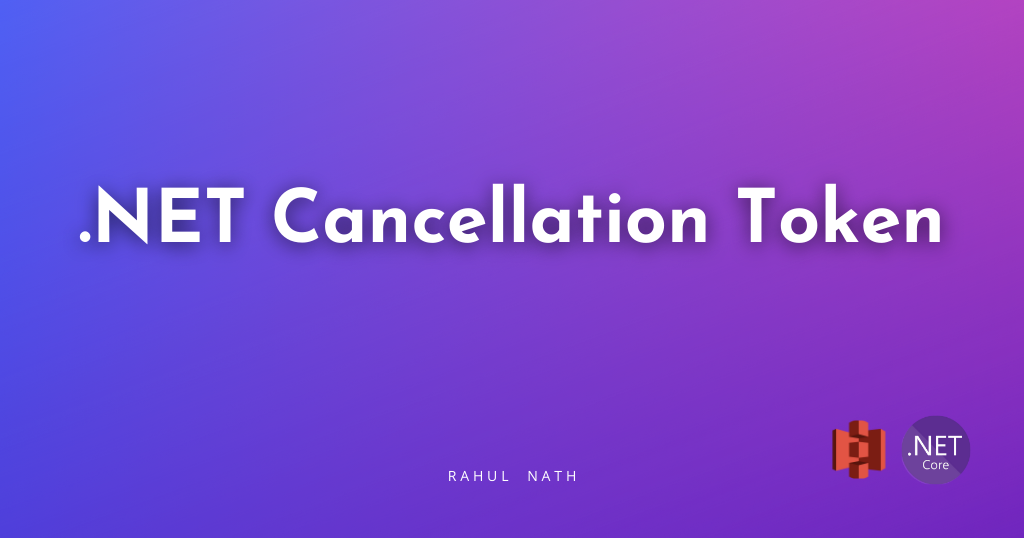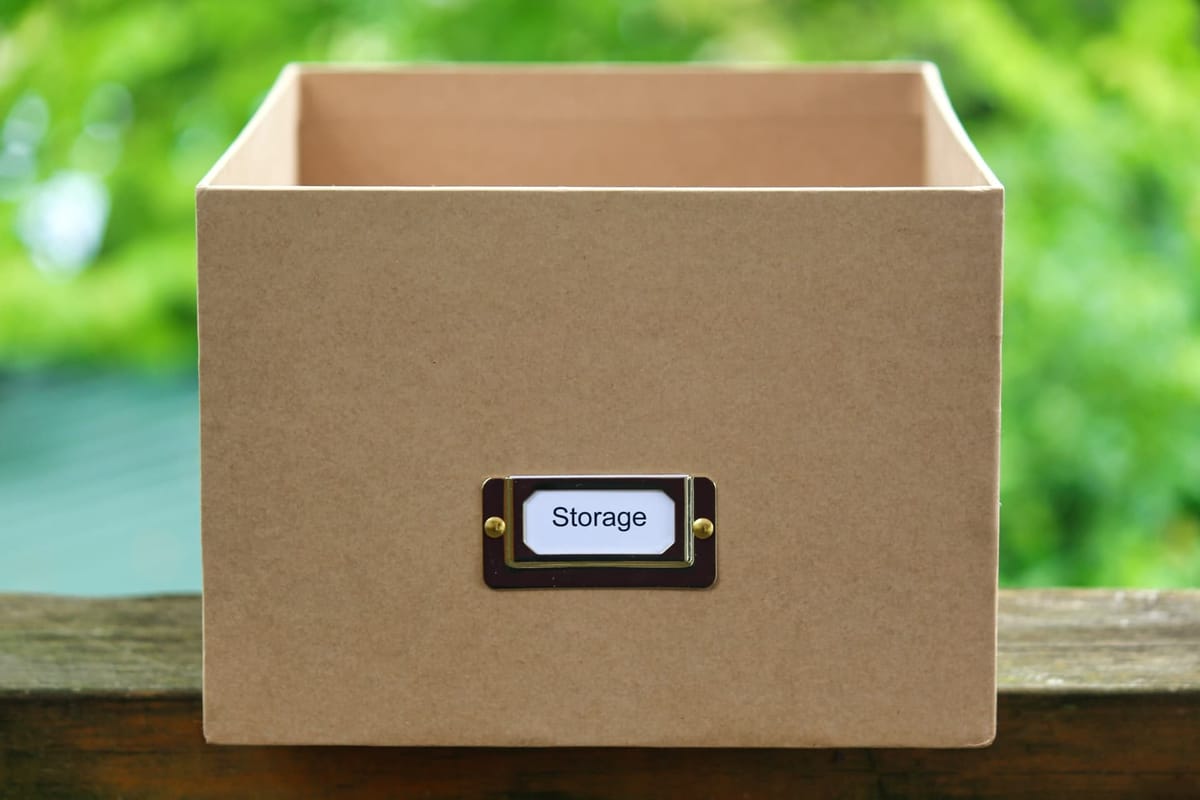
A .NET Programmer's Guide to CancellationToken
Table of Contents
Imagine having a long-running request triggered by a user on your server.
But the user is no longer interested in the result and has navigated away from the page.
However, the server is still processing that request and utilizing resources until you come along and implement Cancellation Tokens in the application code.
In this blog post, let's learn
- Problem with not using Cancellation Token
- What is CancellationToken
- Using Cancellation Token to Fix Long Running Processes
- Using Cancellation Token in HTTP API Calls
This article is sponsored by AWS.
The Problem with not using Cancellation Tokens
Below is a sample GET API endpoint. It simulates some long-running processes called in a loop a hundred times.
app.MapGet("/long-running-request", async () =>
{
var randomId = Guid.NewGuid();
var results = new List<string>();
for (int i = 0; i < 100; i++)
{
await Task.Delay(1000);
var result = $"{randomId} - Result {i}";
Console.WriteLine(result);
results.Add(result);
}
return Results.Ok(results);
})
.WithName("GetAllData")
.WithOpenApi();Long Running GET Api Endpoint
The work is started as soon as the API endpoint is called.
Once invoked, if the user decides to stay at the other end of the request everything works as expected.
However, if the user navigates away from the API request or explicitly cancels out of the API request, the server will continue processing the request; in this case, it loops through the task a hundred times.
It's okay for one-off scenarios; however, if you have a busy website and the number of users increases on your website, this soon starts taking up the server resources that could otherwise be used to serve other user requests.
Let's learn how to fix this and put those server resources to better use.
What is CancellationToken in .NET?
.NET uses Cancellation Token for cooperative cancellation of asynchronous or long-running synchronous operations.
Cancellation tokens are particularly useful when long-running or asynchronous operations must be canceled under certain conditions, such as in UI applications where a user might decide to cancel an ongoing operation.
They allow for a cooperative approach to cancellation, where the executing code periodically checks for cancellation requests and responds accordingly.
Using CancellationToken in .NET
The CancellationToken object in itself is created and managed using the CancellationTokenSource.
The below source code shows a simple usage of the CancellationToken.
var source = new CancellationTokenSource();
Console.WriteLine("Press any key to cancel the operation...");
var longRunningTask = LongRunningOperationAsync(source.Token);
Console.ReadKey();
Console.WriteLine("Key Pressed");
source.Cancel();
await longRunningTask;
async Task LongRunningOperationAsync(CancellationToken cancellationToken)
{
try
{
var i = 0;
while (i++ < 10)
{
cancellationToken.ThrowIfCancellationRequested();
// Simulate some work
Console.WriteLine($"Working {i}");
await Task.Delay(2000, cancellationToken);
Console.WriteLine($"Completed {i}");
}
}
catch (OperationCanceledException )
{
Console.WriteLine("User cancelled the operation");
}
}This code demonstrates how to use a cancellation token to cancel a long-running asynchronous operation in .NET.
It creates a CancellationTokenSource, starts a long-running task, and waits for a key press to cancel the operation.
The LongRunningOperationAsync method simulates work and periodically checks if cancellation has been requested, allowing for graceful cancellation handling.
When a key is pressed, the operation is canceled, and the program responds accordingly, providing a valid response to the calling method and the user.
If the user never cancels (in this case press the key), the long running operation will run to completion.
Cancelling Long Running API Requests in .NET
So, let's fix our long-running API request, which is still on its 88th loop, computing the work we requested.
In ASP NET APIs, when a user makes an HTTP request, the framework automatically creates a CancellationTokenSource and passes the token along with the HttpContext as the ReuestAborted property.
The framework also injects it into the Controller functions if it has a CancellationToken property, as shown in the code below.
app.MapGet("/long-running-request", async (CancellationToken cancellationToken) =>
{
var randomId = Guid.NewGuid();
var results = new List<string>();
for (int i = 0; i < 100; i++)
{
if (cancellationToken.IsCancellationRequested)
return Results.StatusCode(499);
await Task.Delay(1000);
var result = $"{randomId} - Result {i}";
Console.WriteLine(result);
results.Add(result);
}
return Results.Ok(results);
})The updated code now looks at the Cancellation Token IsCancellationRequested property to check if the request has been canceled.
It continues with the work only if the request is not cancelled, otherwise returning a different response result.
So now any time a user navigates away from the page or cancels the request, our long-running process will stop immediately after and stop processing that request completely.
Using CancellationToken For HTTP Requests
You can also use Cancellation Tokens when making external calls to API's or databases.
Let's say we have a scenario in which the user can upload files, and we decide to store them in Amazon S3.
Amazon Simple Storage Service (S3) is an object storage service that provides a scalable and secure storage infrastructure.

This could also be any other service like Azure Blob Storage etc.
When uploading files, if they are large, it will take more time, but we can still be in a state where a user can navigate away.
Not handling this means we will have those large files unnecessarily uploaded to our S3 storage and our server performing those additional work for no reason.
We can use CancellationTokens for the rescue even in these scenarios.
app.MapPost("/upload-large-file", async (
[FromForm] FileUploadRequest request,
CancellationToken cancellationToken) =>
{
try
{
var s3Client = new AmazonS3Client();
await s3Client.PutObjectAsync(new PutObjectRequest()
{
BucketName = "user-service-large-messages",
Key = $"{Guid.NewGuid()} - {request.File.FileName}",
InputStream = request.File.OpenReadStream()
}, cancellationToken);
return Results.NoContent();
}
catch (OperationCanceledException e)
{
return Results.StatusCode(499);
}
})The AmazonS3Client in this scenario, which is from the S3 Nuget package takes in a CancellationToken to it's PutObjectAsync method.
Any time the user cancels the request, the SDK automatically throws the OperationCanceledException and cancels the upload request.
Rahul Nath Newsletter
Join the newsletter to receive the latest updates in your inbox.


